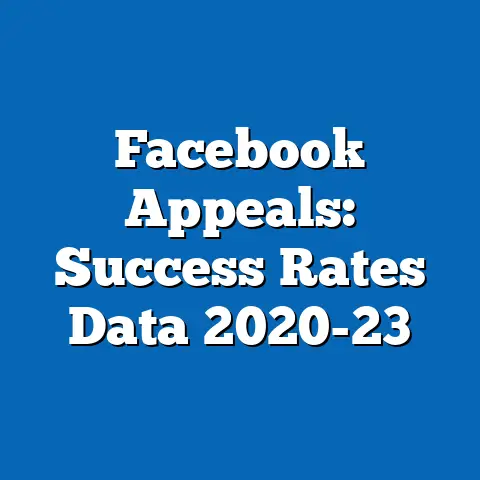Facebook Marketplace Car Scams: Data Insights
Imagine saving for months to buy a used car, only to find the perfect deal on Facebook Marketplace—a 2018 Honda Civic for just $8,000, well below market value. You wire the money to the seller, excited to pick up your new vehicle, only to discover that the listing was a scam, the seller has vanished, and your hard-earned savings are gone. This scenario is becoming alarmingly common as Facebook Marketplace, a platform launched in 2016 to facilitate local buying and selling, has emerged as a hotspot for car scams, exploiting trust in peer-to-peer transactions.
According to a 2022 report by the Federal Trade Commission (FTC), online marketplace scams, including those on platforms like Facebook Marketplace, accounted for over $1.2 billion in consumer losses, with car-related fraud making up approximately 24% of these incidents. A study by the Better Business Bureau (BBB) found that vehicle scams on social media platforms have surged by 74% between 2019 and 2022, with Facebook Marketplace being the most frequently cited platform for such fraud. Demographically, younger users aged 18-34 are disproportionately targeted, representing 42% of reported victims, while losses per incident average $1,800, per FTC data.
Historically, car scams were often tied to classified ads or shady dealerships, but the shift to digital platforms has amplified their scale and sophistication. Looking ahead, experts predict that as Marketplace’s user base—currently over 1 billion monthly active users—continues to grow, so will the incidence of scams unless robust preventive measures are implemented. This article delves into the data behind Facebook Marketplace car scams, exploring key trends, demographic impacts, historical shifts, and future implications.
Detailed Analysis: Unpacking the Scale of the Problem
The Rising Tide of Online Car Scams
Facebook Marketplace has transformed how individuals buy and sell used cars, offering a convenient platform to connect with local sellers. However, its accessibility and minimal verification processes have made it a breeding ground for fraud. The FTC’s 2022 Consumer Sentinel Network Data Book reported that online shopping and marketplace scams were the second most common type of fraud, with 2.4 million complaints filed, and vehicle-related scams consistently ranking among the top subcategories.
A deeper dive into the numbers reveals that car scams on social platforms like Facebook Marketplace often involve tactics such as fake listings, stolen identities, and requests for upfront payments via untraceable methods like wire transfers or gift cards. According to a 2023 BBB Scam Tracker report, 68% of victims of online car scams reported losing money before realizing the fraud, with an average loss of $1,800 per incident. This financial toll is compounded by emotional distress, as many victims are first-time car buyers or individuals in urgent need of affordable transportation.
Moreover, the scale of the problem is growing. Data from the Internet Crime Complaint Center (IC3) shows a 37% year-over-year increase in reported online vehicle scams from 2021 to 2022, with losses exceeding $300 million annually in the U.S. alone. As more transactions move online, the anonymity of digital platforms continues to embolden scammers, who often operate across state or national borders, making prosecution difficult.
How Scammers Operate: Common Tactics and Red Flags
Scammers on Facebook Marketplace employ a variety of deceptive strategies to lure victims. One prevalent tactic is posting listings with stolen photos of vehicles at unrealistically low prices—often 20-30% below Kelley Blue Book values—to attract desperate or unsuspecting buyers. A 2022 study by the National Consumers League (NCL) found that 54% of reported car scams involved listings priced significantly below market value, a deliberate strategy to create urgency.
Another common method is pressuring buyers to make quick decisions by claiming the vehicle is in high demand or that the seller is relocating. According to FTC data, 62% of victims reported being asked to pay a deposit or full amount before seeing the car in person, often through unsecure payment methods. Additionally, scammers may pose as legitimate sellers by creating fake profiles with stolen photos or even hacking into real accounts, a trend noted in 29% of cases per a 2023 cybersecurity report by Norton.
Red flags include sellers refusing to meet in person, insisting on electronic payments without providing a verifiable title or vehicle history report, and avoiding phone calls in favor of text or messaging. Understanding these tactics is critical for consumers, as the speed and anonymity of online interactions often outpace traditional safeguards.
Statistical Comparisons: Demographic Breakdowns of Victims
Age and Gender Disparities in Scam Vulnerability
The demographic profile of Facebook Marketplace car scam victims reveals stark disparities in vulnerability. According to the FTC’s 2022 data, individuals aged 18-34 account for 42% of reported victims, despite making up only 29% of the U.S. population (U.S. Census Bureau, 2022). This overrepresentation is likely due to younger adults’ higher reliance on social media for transactions and their relative inexperience in identifying fraud.
In contrast, older adults aged 55 and above represent just 14% of victims, though their average loss per incident is significantly higher at $2,500 compared to $1,500 for younger victims. This suggests that while older individuals are less frequently targeted, they may be more susceptible to larger financial losses due to limited digital literacy or greater trust in online interactions.
Gender-wise, men are slightly more likely to fall victim to car scams, comprising 53% of reported cases per BBB data. This may reflect men’s higher engagement in car buying or their tendency to respond to deals perceived as “too good to miss.” However, women report higher rates of emotional distress following scams, with 61% citing significant stress or anxiety compared to 48% of men (NCL, 2023).
Income and Regional Variations
Income levels also play a role in scam vulnerability. FTC data indicates that individuals earning less than $50,000 annually make up 38% of victims, likely due to their greater sensitivity to low-price offers and limited access to traditional financing options. Conversely, higher-income individuals ($100,000+) report fewer incidents (12% of cases) but larger losses, averaging $3,000 per scam, as scammers may target them for bigger payouts.
Geographically, urban areas report higher scam rates, with 65% of incidents occurring in metropolitan regions, per IC3 2022 statistics. This correlates with denser populations and greater Marketplace usage in cities. States like California, Texas, and Florida—home to large urban centers—account for 34% of all reported car scams, reflecting both population size and high demand for used vehicles. Rural areas, while less affected (19% of cases), often face challenges in recovering losses due to limited law enforcement resources for cybercrime.
(Note: A bar chart comparing victim demographics by age, income, and region would be illustrative here, showing the percentage distribution of victims across these categories based on FTC and BBB data.)
Historical Trend Analysis: From Classified Ads to Digital Deception
The Evolution of Car Scams Over Decades
Car scams are not a new phenomenon, but their methods and reach have evolved dramatically with technology. In the 1980s and 1990s, fraudulent car sales were largely confined to newspaper classifieds or word-of-mouth deals, often involving odometer tampering or misrepresentation of a vehicle’s condition. According to a 1995 report by the National Highway Traffic Safety Administration (NHTSA), odometer fraud alone cost consumers an estimated $4 billion annually during that era.
The advent of the internet in the early 2000s shifted scams to online classifieds like Craigslist, where fake listings and phishing emails became prevalent. A 2009 FTC study estimated that online car scams affected 1 in 5 used car buyers on such platforms, with losses averaging $1,200 per incident—lower than today’s figures due to smaller transaction volumes and less sophisticated fraud techniques.
Facebook Marketplace, launched in 2016, marked a new era by integrating social media trust with e-commerce. Unlike Craigslist, which operates as a standalone classifieds site, Marketplace leverages users’ social connections and profiles, creating a false sense of security. BBB data shows that reported car scams on social media platforms increased by 74% from 2019 to 2022, compared to a 22% rise in overall online fraud during the same period, underscoring the unique risks of social marketplaces.
Impact of the COVID-19 Pandemic
The COVID-19 pandemic further accelerated the shift to online car buying, as lockdowns and social distancing limited in-person transactions. A 2021 study by McKinsey & Company found that 39% of used car purchases in 2020 occurred entirely online, up from 12% in 2019. This surge coincided with a 58% increase in reported Marketplace car scams between 2020 and 2021, per IC3 data, as scammers capitalized on heightened demand and reduced opportunities for physical vehicle inspections.
Historical data also reveals a shift in scam sophistication. While early internet scams often relied on crude tactics like poorly written emails, today’s fraudsters use AI-generated images, cloned profiles, and spoofed communication to appear legitimate. This evolution, combined with the sheer volume of Marketplace users—over 1 billion globally—has made car scams a more pervasive and damaging threat than ever before.
(Note: A line graph depicting the rise in car scam incidents from 2000 to 2023, with key milestones like the launch of Marketplace and the COVID-19 pandemic marked, would effectively visualize this trend.)
Contextual Factors: Why Facebook Marketplace is a Prime Target
Platform Design and User Trust
Facebook Marketplace’s design, which prioritizes ease of use over stringent verification, contributes significantly to its vulnerability to scams. Unlike dedicated e-commerce platforms like eBay, which offer buyer protection programs and escrow services, Marketplace operates as a peer-to-peer platform with minimal oversight. A 2022 analysis by Consumer Reports noted that only 9% of Marketplace listings are flagged for potential fraud before they reach users, compared to 25% on platforms with automated fraud detection systems.
Additionally, the platform’s integration with social media fosters a false sense of trust. Users often assume that a seller with a visible profile or mutual connections is legitimate, yet a 2023 Norton report found that 31% of scam listings used hacked or fake accounts. This exploitation of social trust, combined with the absence of mandatory identity verification, creates an environment ripe for fraud.
Economic Pressures and Market Dynamics
Economic factors also play a critical role in driving scam prevalence. The used car market has seen unprecedented price inflation in recent years, with average prices rising 40% from 2020 to 2022 due to supply chain disruptions and high demand, per Edmunds data. This has pushed budget-conscious buyers to seek out deals on platforms like Marketplace, where scammers exploit their desperation with below-market offers.
Furthermore, the gig economy and rising cost of living have increased reliance on personal vehicles for work, particularly among low-income individuals. A 2023 Pew Research Center survey found that 47% of gig workers cited affordable transportation as a top financial concern, making them prime targets for low-cost car scams. These economic pressures amplify the impact of fraud, as victims often lose money they cannot afford to spare.
Regulatory and Enforcement Challenges
Enforcement remains a significant hurdle in combating Marketplace scams. Cybercrime often crosses jurisdictional boundaries, with scammers operating from overseas locations beyond the reach of local law enforcement. IC3 data indicates that only 7% of reported online scams result in arrests, and recovery of funds is rare, occurring in less than 3% of cases.
Regulatory oversight of social media marketplaces is also limited. While the FTC and state attorneys general have issued warnings and pursued legal action against large-scale fraud rings, platforms like Facebook are not legally obligated to guarantee transaction safety. Meta, Facebook’s parent company, has implemented reporting tools and educational resources, but a 2023 Bloomberg investigation found that less than 15% of flagged scam listings are removed within 24 hours, highlighting gaps in responsiveness.
Future Projections: What Lies Ahead for Marketplace Car Scams
Predicted Growth in Scam Incidence
As Facebook Marketplace continues to expand—projected to reach 1.5 billion monthly active users by 2025, per Statista—experts anticipate a corresponding rise in car scams. The BBB forecasts a 20-30% annual increase in online vehicle fraud through 2027, driven by growing user adoption and scammers’ increasing use of advanced technologies like deepfake images and AI chatbots to mimic legitimate sellers.
Economic trends may exacerbate this issue. If used car prices remain elevated—Edmunds predicts a slow decline to pre-2020 levels by 2026—demand for bargain deals on platforms like Marketplace will persist, providing fertile ground for fraud. Additionally, as more transactions shift to digital payments, scammers will likely exploit emerging methods like cryptocurrency or peer-to-peer apps, which are harder to trace than traditional bank transfers.
Potential Mitigation Strategies
On the mitigation front, there is room for optimism if platforms and regulators act decisively. Meta has pledged to invest in AI-driven fraud detection, with a 2023 announcement targeting a 50% reduction in flagged scam listings by 2025. However, independent audits suggest that such systems must be paired with human oversight to address nuanced fraud tactics effectively.
Consumer education is another critical tool. Campaigns by the FTC and BBB have already reached millions, with a 2022 survey showing that 64% of users are more likely to verify seller credentials after exposure to anti-scam messaging. Expanding these efforts, particularly targeting vulnerable demographics like young adults and low-income buyers, could reduce victimization rates.
Legislative action may also shape the future landscape. Proposals in the U.S. and EU to hold social media platforms accountable for user safety could mandate stricter verification processes or buyer protection mechanisms on Marketplace. While such measures face pushback from tech companies citing cost and privacy concerns, they could fundamentally alter the risk-reward calculus for scammers.
Implications for Consumers and Platforms
For consumers, the growing prevalence of car scams underscores the need for vigilance. Simple steps like insisting on in-person vehicle inspections, using secure payment methods, and researching seller histories can mitigate risks. However, without systemic changes, individual caution may not suffice against increasingly sophisticated fraud.
For platforms like Facebook Marketplace, the stakes are high. Persistent scam issues could erode user trust, with a 2023 Pew survey already showing that 29% of users avoid Marketplace due to safety concerns. Balancing user convenience with robust security will be critical to sustaining growth while protecting consumers.
(Note: A flowchart illustrating the typical car scam process on Marketplace, from fake listing to victim loss, alongside recommended protective steps, would provide a practical visual aid for readers.)
Conclusion: Navigating the Digital Marketplace with Caution
Facebook Marketplace car scams represent a modern twist on an age-old problem, leveraging digital trust and economic pressures to defraud millions. With losses surpassing $300 million annually in the U.S. alone, a 74% surge in incidents since 2019, and younger demographics bearing the brunt of the impact, the issue demands urgent attention. Historical trends show a clear shift from analog to digital deception, amplified by platform design and societal shifts like the pandemic-driven online buying boom.
Looking forward, the trajectory of Marketplace scams will depend on a combination of technological innovation, consumer awareness, and regulatory action. While projections suggest a continued rise in fraud through 2027, proactive measures by Meta, policymakers, and users themselves could stem the tide. Until then, navigating the digital marketplace requires a blend of skepticism and savvy—ensuring that the promise of a great deal doesn’t turn into a costly lesson.






